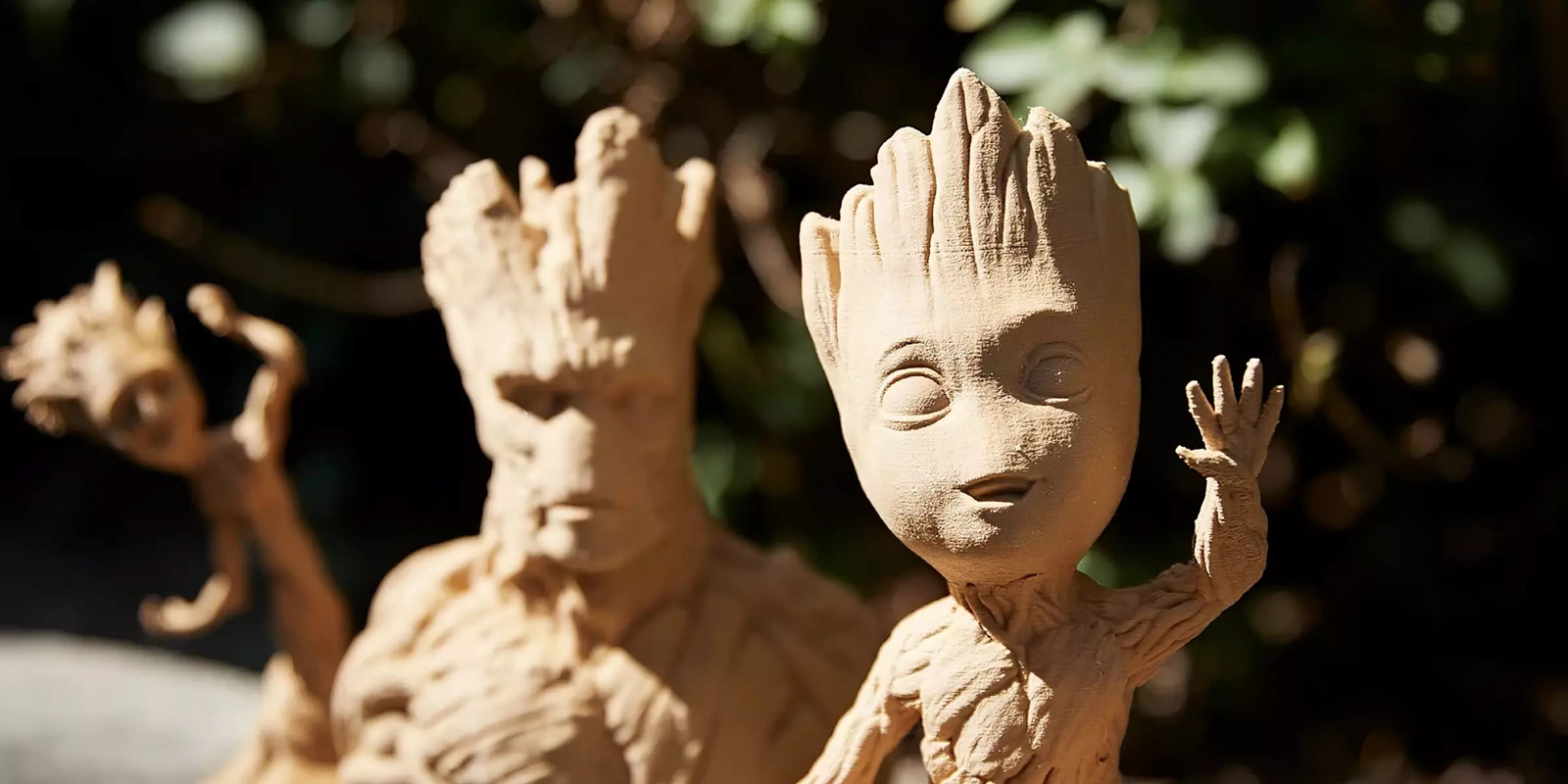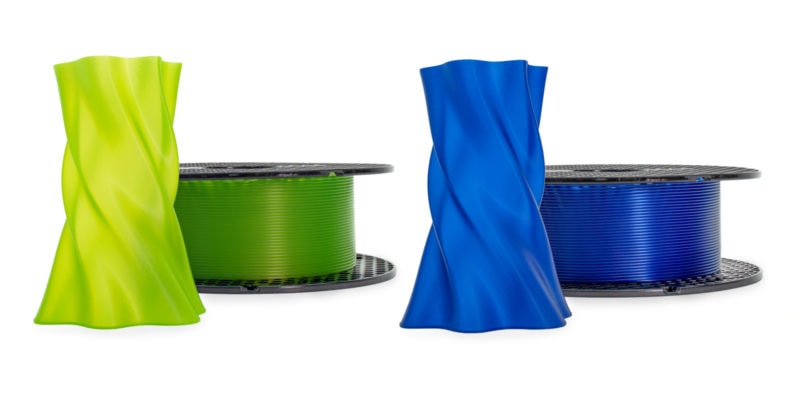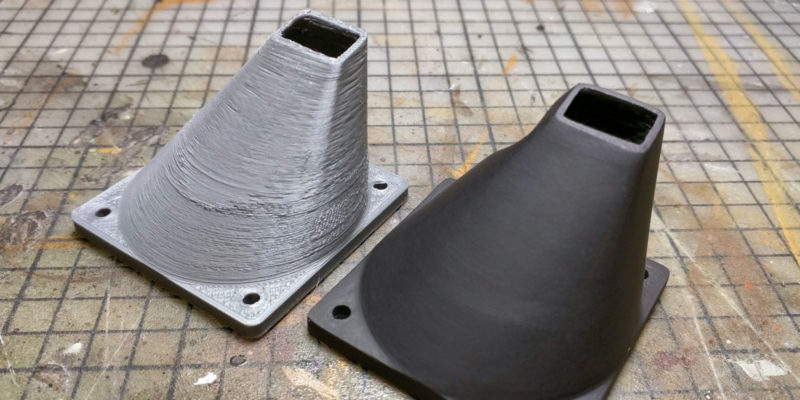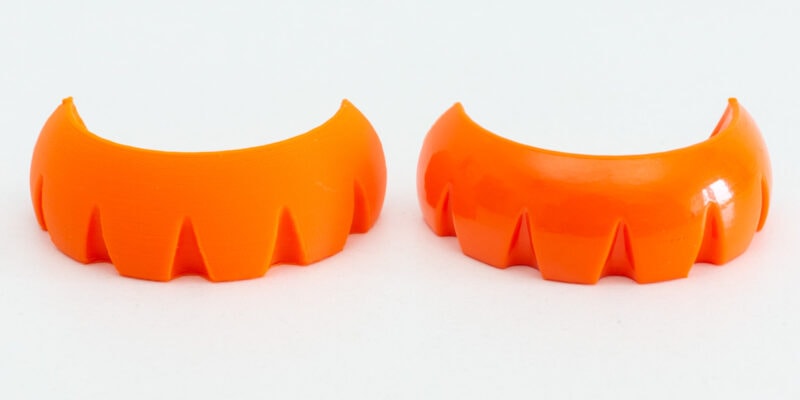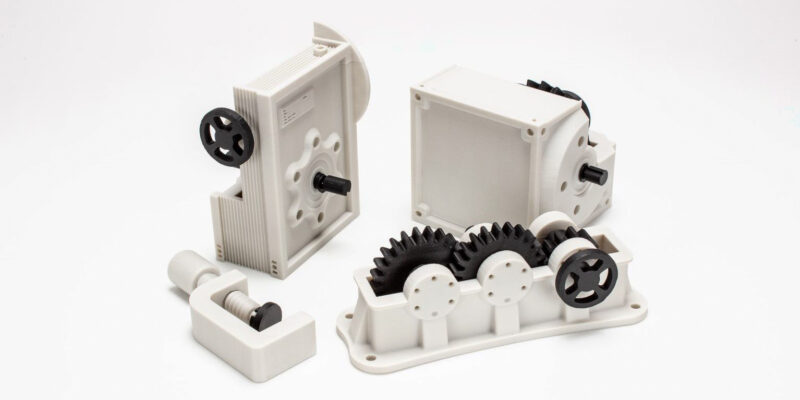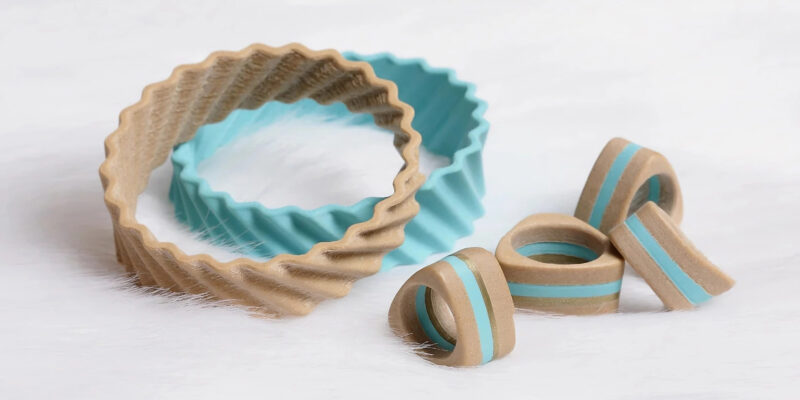If you’re ready to upgrade your 3D printing experience past basic PLA, we’ve got some great news for you: you don’t have to lose your sanity jumping into more advanced filaments just yet. There are plenty of types of PLA filament you can explore.
These PLA filament types can take your prints to a whole new level while still keeping the easy printability of the standard material.
Let’s take a look at the different types of PLA filaments that are available, what you can best use them for, and which brands will give you the best results.
Different Types? Isn’t All PLA Filament the Same?
While all 3D printing PLA filament is made from the same base (polylactic acid), manufacturers can add additional materials or polymers to change the physical or mechanical properties of the finished filament. This is sometimes done while the PLA filament itself is being produced, which changes the PLA’s structure on a molecular level.
More often than not, special types of PLA filaments are made by melting PLA pellets and other materials together. This keeps the basic properties of the PLA plastic intact while incorporating other substances such as wood or metal particles, changing the color or appearance of the filament, or giving the plastic additional functions (such as glow-in-the-dark, black light luminosity, et cetera).
Types of PLA Filament to Choose From
Wood PLA

3D printed items are already sometimes mistaken for wood because the layer lines are similar in appearance to wood grain. Wood PLA filament takes this further by mixing wood pulp into the PLA pellets during the extrusion process.
This produces prints that are the same color and texture as real wood. You can also sand, stain, and seal your prints similar to a fully wooden object as well. The small amount of PLA present acts as a bonding agent to keep the wood pulp together and allows you to print it like any other PLA filament.
While there are several wood-filled PLA filaments on the market, we recommend PolyWood from Polymaker. It uses a special foam instead of wood fiber to create the look and feel of wood without clogging your nozzle. And even though PolyWood is not made from actual wood materials, you can still stain and seal it using popular woodworking products and techniques.
Clear/Transparent PLA
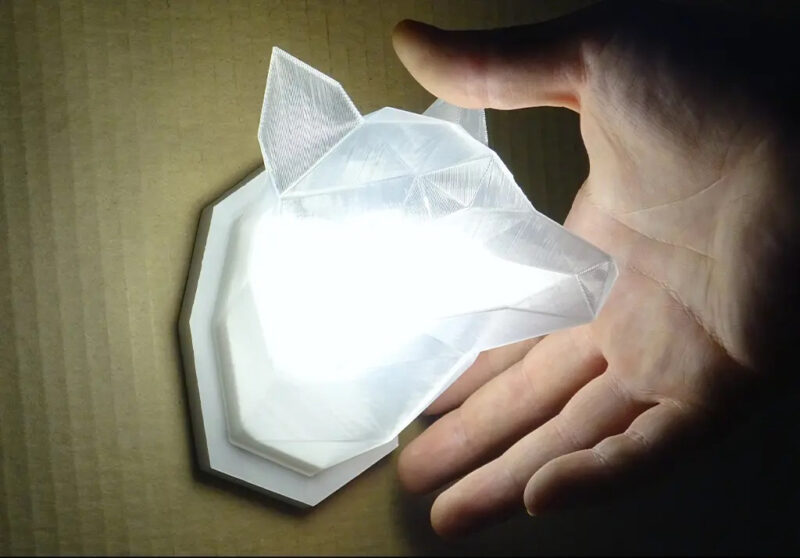
Clear or transparent PLA filaments are exactly as they sound. They function and behave like your typical PLA filament, but they print semi-translucent. These filaments are great for printing containers or bottles where you want the contents to be somewhat visible from the outside.
They are also a good aesthetic choice for making electronics casings (think of the N64-era clear consoles and controllers), or for when you have inner light sources that you want to shine through the plastic.
With transparent PLA, you do have to give more thought to your 3D print settings. For example, if you use infill, it will be visible in the finished product.
You may want to change the shape of your infill pattern or omit infill completely depending on the final look you want to achieve. You also need to consider the amount of outer shells you use, since these can make your prints more or less opaque.
Our preferred transparent PLA brand is Fillamentum’s Crystal Clear line. Their filament comes in six unique colors and two different diameters. With a suggested PLA print temperature of 220°C, it runs a bit on the high side of PLA’s usual 3D printing temps, but it still prints fine on even a basic 3D printer.
Tough PLA (PLA+)
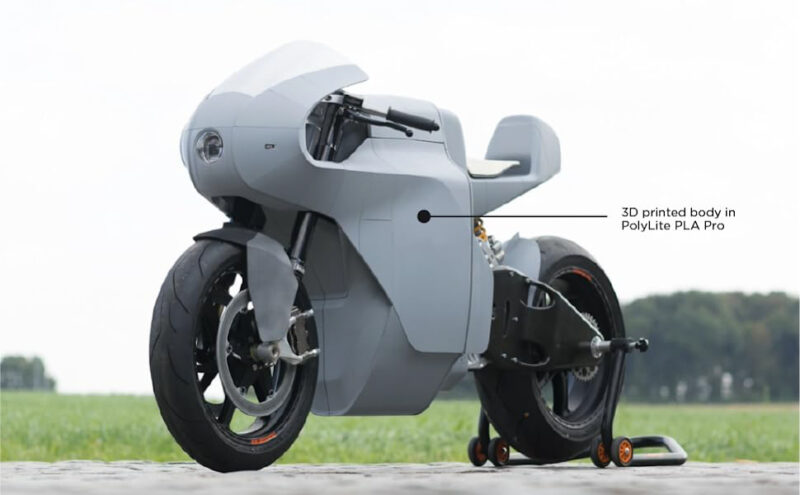
Tough PLA or PLA+ filament is designed to have greater durability than even the best PLA filaments. PLA+ is a catch-all term for filaments that improve some aspect of basic PLA, so the properties of one brand’s PLA+ filament will vary significantly from another brand’s.
The PLA characteristics that are often improved on in PLA+ formulas are its brittleness, tensile strength, flexibility, and heat resistance. Some brands try to slightly improve as many characteristics as possible while others focus on drastically improving one or two of PLA’s physical properties. It’s important to check the manufacturer’s description of each PLA+ product before you buy to make sure their formula suits your needs.
We’ve found Polymaker’s PolyLite PLA Pro to be a great solution for added toughness and durability without sacrificing ease of use. PolyLite Pro combines the rigidity of its usual PLA with the flexibility and high impact resistance of the PolyMax line. With 22 possible colors, three spool sizes, and two diameters, PolyLite Pro is one of the most versatile PLA+ filaments on the market.
Silk PLA
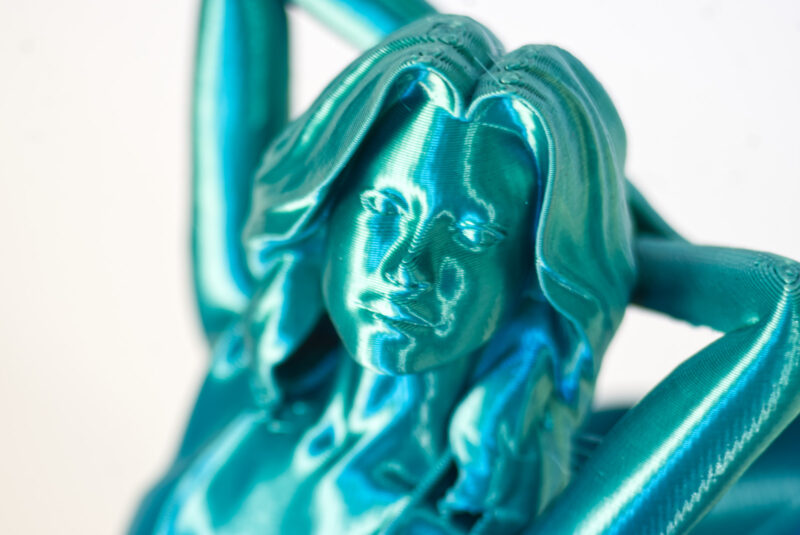
When you’re looking for an interesting finish for your 3D prints, silk PLA filament gives you a surface shine between glossy and matte. Prints made with silk PLA often have a metallic sheen to them and are often slightly translucent. The unique and eye-catching look of this silky filament makes it one of the best options for decorative items and props.
For silk PLA, we recommend the Overture brand. They have 16 single-color and nine dual-color filaments available in their silk line, as well as 30+ shades in their regular PLA line. Their PLA filaments are designed to flow consistently for fewer clogs and jams and have excellent layer adhesion. Their +/-0.03 mm dimensional accuracy also ensures consistent print quality and ease of use, so even beginning printers can get great results in their projects.
Rainbow PLA

You don’t need a dual extruder to achieve multicolored prints when you use a variegated filament, and rainbow PLA filament is as variegated as it gets. With several bright colors extruded into one strand, rainbow filaments can add personality to any project.
The special properties of rainbow PLA filament are strictly aesthetic, so you can use them interchangeably with regular PLA. Because of their colorful design, they tend to work best with decorative items, toys, vases, and other aesthetically-focused projects.
While there are several available options for rainbow PLA filaments, we recommend the SUNLU brand. Theirs comes with six colors that change every 15-18 meters, which is a good distance for multiple colors in most 3D prints. It is also available with regular and silk surface finishes.
Flexible/Soft PLA

Similar to TPU, soft PLA is a flexible filament with a rubbery consistency. Soft PLA tends to be more flexible than TPU filaments, so it is a great option for high-wear parts, insoles, phone cases, and more.
Like any flexible filament, soft PLA can be difficult to use—especially if your printer has a Bowden extruder. You will have to experiment quite a bit with your print settings to get it working right, so it is not a beginner-friendly material. When you get it working, however, flexible PLA is a great solution for many projects.
Flashforge’s line of soft PLA filaments is our top choice for flexible PLA brands. They have excellent elasticity and can stretch four times their original length. It’s available in ten different colors and boasts an impressive +/-0.02 mm dimensional accuracy. Their products are also designed to be low-odor, so you don’t have to worry about strong chemical smells during use.
Hyper (High-Speed) PLA
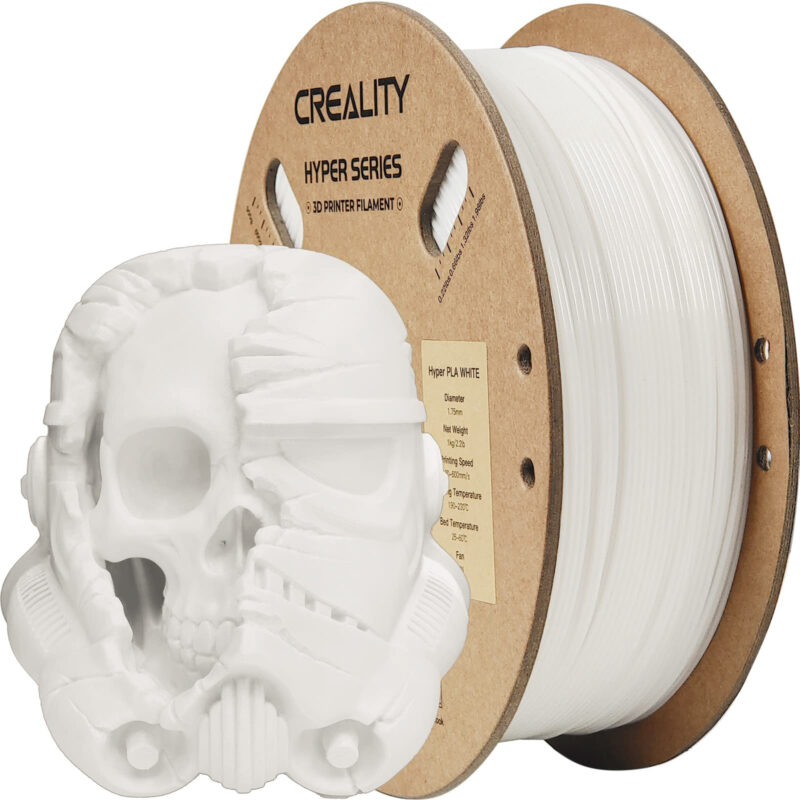
As the name implies, high-speed PLA filament is designed to print at faster speeds than traditional PLA. These filaments are a good choice when you need to speed up your printing process without sacrificing accuracy or print quality.
You likely won’t have a need for high-speed PLA filaments if you use a regular 3D printer. However, if you have a fast 3D printer, you’ll see more benefits.
Creality’s Hyper PLA filament line 3D prints 10 times faster than standard PLA thanks to its high flow rate and shortened cooling time. Changing the viscosity of the melted plastic ensures that your printer won’t under-extrude at higher speeds and that the material bonds well with other layers.
The reduced cooling time prevents deformation in your prints, which occasionally happens with standard PLA when your print speed is too high. Your previous layers can’t handle the weight of new layers when they are still soft and pliable, so they collapse under pressure.
Creality’s high-speed PLA also improves its toughness and impact resistance, giving it a stronger tensile and bending strength than both standard PLA and ABS filaments. This makes it a great option for industrial uses and prototyping since you can create strong prints quickly and efficiently for mass production.
Metal PLA

Similar to wood PLA, metal PLA filament is made by combining a certain mixture of metal particles and PLA pellets during the manufacturing process. The PLA acts as a bonding agent that allows the metal powders to stay in a cohesive shape.
The final 3D print retains many of the properties of the base metal, such as added weight and texture. Metal PLA prints can also be patinaed or polished like traditional metals. A great solution if you are interested in 3D printing props or other cosplay items.
The most common metal-filled filaments contain copper, brass, bronze, and steel. They work well for aesthetic purposes like statues, home decor, and jewelry. They can also be useful for specialized industrial uses, depending on which base metal is used.
For example, copper is known for its heat conduction and antimicrobial properties. 3D prints made with Copperfill could be useful for applications that require a simple heat sink or a certain level of natural sterility.
Protopasta’s metal-filled filaments are some of the most reliable out of the brands we’ve tested. Not only do they have a good selection of base metals to choose from, but their type of metal-filled PLA is also specially formulated to withstand higher temperatures than normal PLA filament.
Glow-in-the-Dark PLA
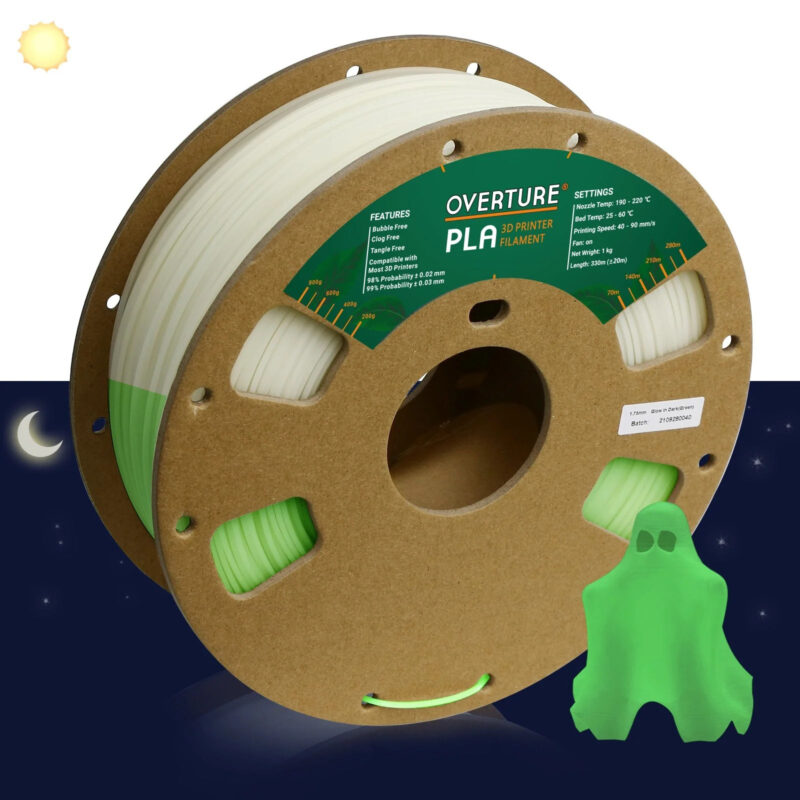
Another way to give your 3D prints a unique appearance is with glow-in-the-dark PLA filament. While glow-in-the-dark PLA prints with the same settings as typical PLA filament, some of its additives are highly abrasive, just like with metal PLA. Again, you may want to upgrade to a hardened steel nozzle or at least keep some spare brass nozzles on hand.
There are several good glow-in-the-dark brands available, but we’re partial to Overture. Like their other PLA products, their glow-in-the-dark filament is designed to have a higher softening point to prevent clogs. They also dry their filaments for 24 hours before vacuum sealing them to ensure that they’re free of moisture and won’t bubble during 3D printing.
Carbon Fiber PLA

For stronger and more durable prints, carbon fiber PLA filament is a great option. Made by mixing carbon fibers into the PLA, these filaments add significant rigidity to your finished prints.
3D printing with carbon fiber PLA isn’t much different from regular PLA. However, carbon fibers can make the filament more brittle and prone to breakage, so having a 3D printer with a filament sensor can make a big difference with this material.
Carbon fibers are also highly abrasive. They can damage basic brass nozzles very quickly, so you should switch to a hardened steel nozzle before using it.
Since carbon fiber PLA adds rigidity without adding extra weight, they work best for parts that don’t bend. Drone frames, propellers, tools, and other parts that need reinforcement while saving weight are some of the best ways to use this material.
Our go-to carbon fiber PLA filament is made by Protopasta. Their reinforced CF PLA prints with standard PLA settings, making it compatible with even basic printers. Their fibers are designed to fit through standard nozzles without clogging while still being long enough to reinforce the finished prints.
Marble PLA

Another great aesthetic option for your 3D prints is marble PLA filament. It is made by adding black flecks to a white or gray base to imitate the appearance of marble. These filaments are great for busts, statues, home decor, and other items that traditionally would have been made from marble.
Polymaker’s PolyTerra is our preferred marble PLA brand. It comes in white or slate-gray color with a matte finish. PolyTerra filaments are designed to outperform regular PLA in several ways. They sand easier, are less brittle, and bond with paints easier than PLA. They also use recycled cardboard packaging and spools and plant a tree for each spool of filament that is purchased!
Sparkling/Glitter PLA
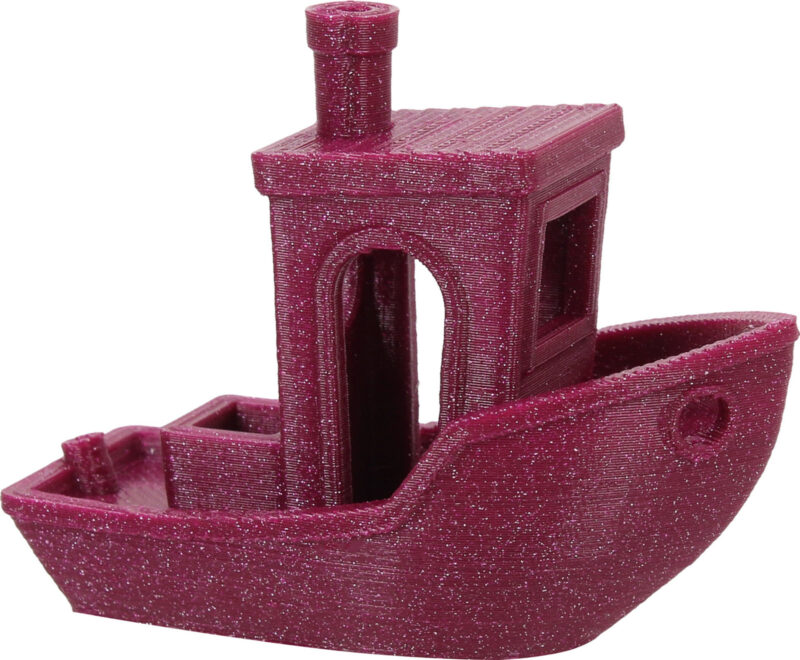
Sometimes a project just isn’t complete without glitter. Thankfully, several PLA filament types contain glitter, iridescent powders, and other sparkly materials added in. These filaments are perfect for 3D prints that can use a little extra aesthetic, so they work well for toys, jewelry, and decor items.
Like most composite filaments, glitter PLA can add wear and tear to your brass nozzle, so you’ll have to switch yours out periodically or upgrade to a hardened steel nozzle. Absolutely worth it in our opinion!
There is a wide variety of different glitter PLA filaments available, and many of them utilize different types of additives. We’ve found ERYONE’s glitter PLA filaments to be a good basic option in this category. They use ultra-fine glitter in their products, which decreases the risk of clogs and nozzle wear. They come in five “galaxy” colors and come with reliable recommended print settings for several popular 3D printers.
Color-Changing PLA

As the name implies, color-changing PLA is a type of filament that changes colors. The change is activated by either temperature or UV exposure depending on the PLA type and brand.
With temperature-activated PLA filament, the filament turns one color above a certain temperature and another color below it. If you ever had a piece of “mood” jewelry as a child, then you’re likely already familiar with the concept.
Temperature-activated PLA is a great material for items that will be used in environments with fluctuating temperatures. Items that come into frequent contact with the user’s skin are also ideal since their body heat is enough to trigger the reaction in most filaments.
UV-sensitive PLA filament, on the other hand, changes from one color to another when exposed to UV light. These filaments work well for 3D prints that will be used both inside and outside, such as planters or jewelry.
Hatchbox UV Color Changing PLA is our favorite brand in this category. It is affordable and available in two color combinations (blue and purple). At +/-0.03 mm dimensional accuracy, its print quality is consistent and reliable.
Matte PLA
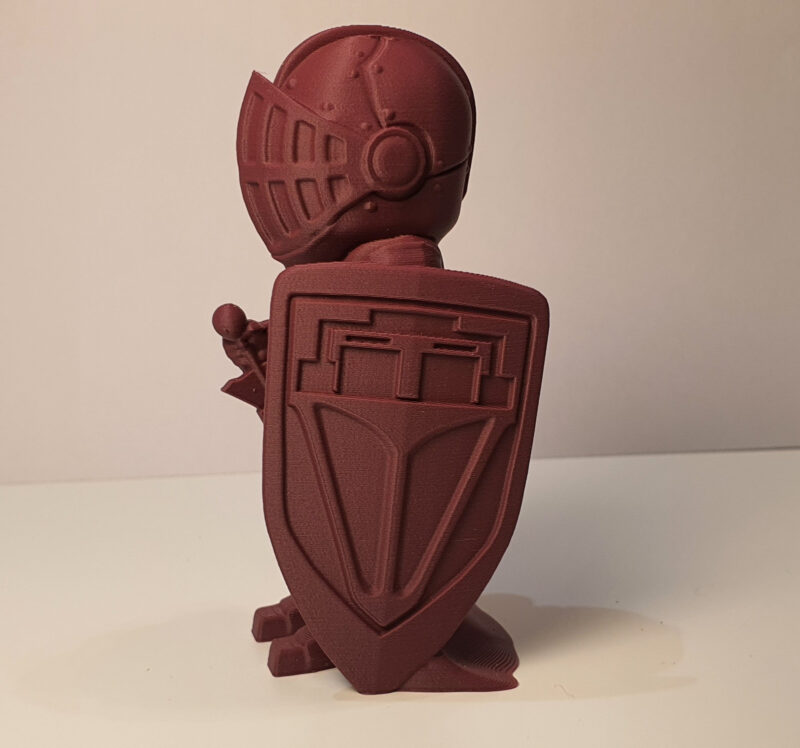
While most PLA prints with a glossy texture, matte PLA filament has a flat surface finish. These filaments are a great option for 3D prints that are meant to look more organic. It also works well for projects that need to be photographed, since the muted surface won’t produce as many light glares and layer lines as glossy PLA.
Our recommended matte PLA filament brand is PolyMaker. With 45 different available shades, their matte color options are extensive. They even have a few dual-color filaments in this line to add extra depth to your projects. Like with their other PolyTerra filaments, they plant a tree for every spool of matte PLA they sell.
High-Temperature PLA

As you probably know, one of the biggest downsides of regular PLA filament is that it has an extremely low-temperature threshold. This makes it easier to 3D print with than other materials, but it limits where and how you can use your finished prints.
High-temperature PLA filament is designed to print at standard PLA temperatures while being able to withstand high-temp environments.
The trick is a process called annealing. Finished prints are held at a temperature just below their glass transition point for an extended period. This activates the additional chemicals and polymers in the filament and makes the parts more temperature-resistant.
Protopasta’s HTPLA line is the best-known brand for this type of product. Their filaments are specially formulated to toughen when heat treated. After annealing, their HTPLA is three times more resistant to heat than standard PLA.
Lightweight PLA

Lightweight PLA filament is created using a special foaming technology that creates a much lower density than standard PLA. This type of PLA filament is ideal for projects that need an overall lighter load while keeping the same form. RC planes, drones, and other aerodynamic projects are all examples of where this material can be useful.
Lightweight filaments use either active or passive foaming technology. Active foaming means the material activates when heated in the hotend, while passive foaming is already expanded before printing. Passive foaming is easier to use because you don’t need to change your print settings, but active foaming allows you to print up to three times as many parts from a single spool.
PolyLite LW-PLA is our top choice for a lightweight PLA filament. It uses passive foaming technology, so you can use your standard 3D print settings to use it. Finished LW-PLA prints have half the mass of standard PLA and are available in seven different colors.
Magnetic PLA

This type of PLA filament can be a bit misleading at first glance. Magnetic PLA refers to an iron-infused metal PLA filament that reacts to magnets but will not act as a magnet itself. Like other metal PLAs, it is made by melting iron particles into PLA pellets, so it retains many of the same properties of pure iron after printing.
It can rust for aesthetic purposes and weighs significantly more than standard PLA. Magnetic iron PLA filament is a great solution for 3D printing switches, sensors, jewelry, accessories, props, statues, and decor.
Protopasta Magnetic Iron-Filled PLA is our top choice for magnetic PLA filament. Like their other metal-filled materials, it uses ultra-fine metal particles to minimize clogs and can be finished by heat treating or polishing.
What Is the Strongest PLA Filament?
Strength is a relative term, so the “strongest” PLA filament depends on how you’re using the finished print. As a general rule, PLA+ filaments are usually stronger than standard PLA, so those are a good first choice.
Protopasta’s HTPLA filaments are also a good option since they have increased strength and temperature resistance when heat treated. This makes them more versatile than even the PLA+ brands.
Special composite PLA filaments like carbon fiber PLA can also add durability to your finished prints, but they do come with some downsides. Composite filaments in general can add wear and tear to your nozzle and extruder, while carbon fiber PLA specifically has a lot of issues with PLA brittleness. If you need additional reinforcement in your parts, however, they are still worth considering.

What Is the Most Expensive PLA Filament?
The many PLA filament types vary in terms of cost, and there isn’t one type or brand that costs more than all the others. Factors like quality, additives, and uniqueness all contribute to a higher price tag.
Manufacturers who use high-grade materials and manufacturing processes are typically more expensive than brands that cut corners on quality. Certain additives (like metal powders) can also drive up the cost since those materials cost more than basic PLA filament.
Is Tough PLA the Same As PLA+?
Not necessarily. Tough PLA is specially formulated for greater tensile strength and impact resistance. PLA+ is a generic term that refers to any PLA filament that has been modified for better physical or mechanical properties.
While strength is often one of the properties PLA+ filament tries to improve, it can also address problems with brittle pla filament, clogging, shrinkage, PLA not sticking, et cetera. PLA+ filaments vary significantly between brands, so it’s important to read the product descriptions for each brand to ensure it improves the characteristics you want.
Does the PLA Filament Brand Matter?
When it comes to 3D printer filament, not all brands are created equal. Not only can cheap, low-quality PLA filaments have harmful additives and contaminants in them, but they also usually don’t perform as well as high-quality brands.
Bad filament brands are more likely to arrive with moisture and brittleness issues, cause clogs and jams with uneven filament diameters, and produce weak final prints. Beyond that, they are less safe to use than most well-known brands. Because they use fillers and cheap materials, they have a higher probability of containing contaminants like heavy metals. This affects both the food-safety of PLA and whether the PLA is biodegradable.
You might also find differences in smoothing the PLA, painting the PLA 3D prints, and how well you can dissolve the PLA. Each manufacturer’s filament can respond differently to certain solvents, paints, and adhesives.
What Is the Difference Between PLA and Meta PLA?
Meta PLA is a special type of PLA filament that is formulated for high-flow printing. It is more fluid than regular PLA when it melts, which reduces clogs and shrinkage and improves layer adhesion and bonding. They have a high-gloss surface finish and are designed for better impact resistance and toughness than regular PLA.
Final Thoughts
There is no denying that PLA is an extremely versatile material. It’s safe and easy to use, works with a basic 3D printer, and is made from natural sources.
While it has some significant disadvantages like low temperature resistance and brittleness, filament manufacturers have designed numerous types of PLA that improve these characteristics significantly.
From color-changing to metal-filled to lightweight, there is a type of PLA filament for almost every project you can think of.
What’s your favorite specialty PLA filament? Let us know in the comments below!
